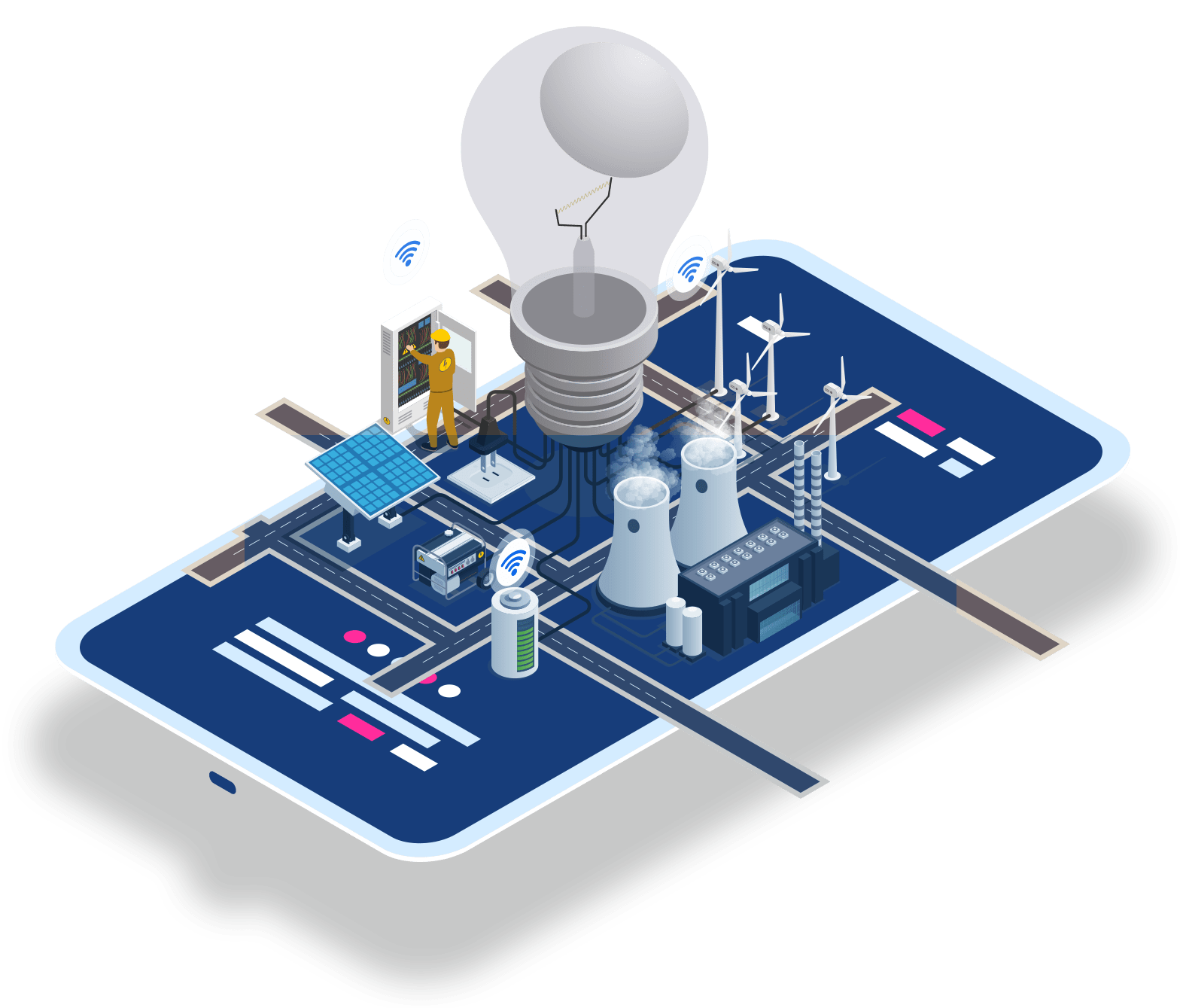
Smart Electricity
Smart Electricity solutions leverage IoT technologies to improve grid reliability, optimize energy use, and reduce costs.
N-Smart presents energy companies with a cost-effective metering solution that goes beyond traditional methods. With IoT, energy companies can implement peak and off-peak pricing, fault detection, and remote switching features. This enables the creation of Smart Grids, which are electricity supply networks utilizing digital communications technology to detect and respond to local changes in energy usage.
Automated Meter Reading
01 Automated meter reading, enabled by the Internet of Things (IoT), revolutionizes grid automation in urban areas by employing smart electricity meters that transmit readings through the network.
02 This technology enables utility companies to remotely monitor electricity usage, reducing billing costs by eliminating the need for manual meter readings and minimizing errors.
03 Additionally, by providing consumers with access to real-time energy usage data, this system aims to lower their bills by encouraging more conscious energy consumption.
01 IoT has transformed grid automation in urban areas by implementing automated meter readings.
02 This innovative approach utilizes smart electricity meters that transmit readings using network technologies.
03 This technology allows utility companies to remotely monitor electricity usage, decreasing billing expenses by eliminating manual meter readings and reducing errors.
04 Moreover, the system empowers consumers with real-time energy usage data, promoting energy-conscious behavior and ultimately reducing their utility bills.
Fraud, leaks and power losses detection
Load Management
01 Smart meters facilitate transformer load management by constantly calculating and monitoring impedance at the device level within the lower voltage system.
02 This capability empowers utility companies to make informed decisions and prevent potential overload scenarios, thus minimizing energy losses, ensuring safety, and saving valuable resources in time and money.
A substation's temperature and humidity levels play a crucial role in determining the lifespan and efficiency of utility assets. By employing remote sensing technology, it becomes possible to ensure the well-being of grid assets. This involves monitoring the operating conditions of medium/low voltage street cabinets, such as temperature, humidity, vibration, door contact, and pulse, to detect unauthorized openings and overheating. Additionally, remote sensing enables the detection of lightning impact on critical network infrastructure by utilizing connected surge arresters. It can also help in identifying instances of theft involving copper cable drums through the use of trackers. Furthermore, monitoring overhead power lines allows for detecting electrical faults in segments connected to electric boxes located at the base of poles.
Smart Asset Management
Demand and Response
IoT enables precise management of individual loads, allowing for their selective activation and deactivation.
This capability proves valuable in peak power demand, as it minimizes the impact on customers while reducing energy consumption where necessary.
Integrating a device seamlessly into the electrical panel makes Residential Demand Response more effortless and affordable.
These initiatives incentivize customers to adopt energy-conserving habits, offering utilities an additional tool to manage their infrastructure usage efficiently.
Consequently, both Capital Expenditure (CAPEX) and Operating Expenditure (OPEX) costs are reduced, resulting in lower utility bills for customers.
